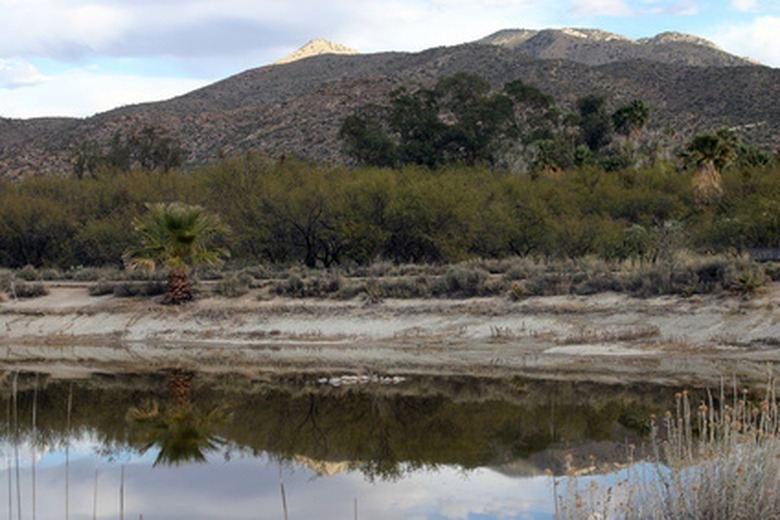Herbicides That Can Be Sprayed Along Stream Banks
Whenever there's talk of spraying herbicides near open bodies of water, people become wary. In 2009, U.S. Customs and Border Protection scrapped a plan to spray herbicide along the Rio Grande over lawsuits filed by citizens to block it. But the Environmental Protection Agency has a list of chemicals that are approved for use along stream banks. They are supposed to eliminate weeds without being toxic to animals in streams and humans that may come in contact with them.
Imazapyr
Imazapyr is the herbicide U.S. Customs and Border Protection planned to use along the Rio Grande. It is approved for control of broadleaf and woody plants as well as invasive aquatic species and plants along stream banks and other riparian buffer zones. The chemical herbicide blocks plant growth by preventing them from synthesizing key amino acids. Imazapyr is supposed to be harmless to humans because they do not have the same biological systems as plants.
- Whenever there's talk of spraying herbicides near open bodies of water, people become wary.
- In 2009, U.S. Customs and Border Protection scrapped a plan to spray herbicide along the Rio Grande over lawsuits filed by citizens to block it.
Glyphosate
According to Iowa State University, glyphosate is an herbicide that can be used to kill weeds along stream banks and in floodplains and other riparian buffers in preparation for planting desirable vegetation. Glyphosate is a systemic herbicide that plants absorb and spread throughout their vascular system. It kills the plant to the roots so that new plants will not emerge. Glyphosate is a moderately toxic herbicide. Humans who have been exposed to glyphosate have reported eye irritation. For this reason, it carries a toxic label.
Triclopyr
Triclopyr is a systemic herbicide often use in combination with or as an alternative to glyphosate. It's used to control woody and herbaceous plants. Like glysophate, triclopyr mimics the effects of plant growth hormones to block growth. The EPA has labeled triclopyr a toxic chemical because animals exposed to the herbicide exhibit signs of toxicity poisoning that include eye irritation. Although rabbits do not show skin sensitivity to triclopyr, guinea pigs do. Rats exhibit signs of toxicity poisoning from inhaling triclopyr fumes. Humans do not appear to absorb triclopyr through the skin, and there are no reports of poisoning from ingesting triclopyr.
- According to Iowa State University, glyphosate is an herbicide that can be used to kill weeds along stream banks and in floodplains and other riparian buffers in preparation for planting desirable vegetation.
- Glyphosate is a systemic herbicide that plants absorb and spread throughout their vascular system.
